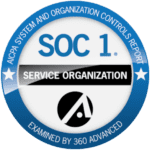PROVEN STRATEGIES FOR CONTROLLING FREIGHT COSTS
A supply chain management company that helps businesses optimize their transportation logistics and reduce costs, Hatfield & Associates offers a range of services to companies of all sizes—from small businesses to very large corporations. It helps businesses manage all aspects of their transportation needs, audits freight invoices for accuracy and offers consultation services that help businesses improve overall supply chain efficiency. Jack Hatfield, the company’s founder and president, highlights the “before-and-after” scenario involving a large manufacturer that needed help solving some pressing transportation challenges.
Q: WHAT CHALLENGE WAS YOUR CUSTOMER FACING?
A: This particular manufacturer was working with more than 450 different suppliers and needed to gain better control of routings, costs and correct carrier usage. To tackle the problem, the manufacturer was using some internal tools, including a written route guide and various handson, manual systems that were costing the company time and money. Multiplied across 450 different suppliers, the time spent—and likelihood of data errors—was causing major headaches for this growing manufacturing firm. And with no integrations between the written route guides, spreadsheets and emails, the company also had very poor visibility into how its hundreds of different suppliers were managing their transportation and freight.
Q: WHAT OTHER ISSUES WERE THE MANUFACTURER’S MANUAL FREIGHT MANAGEMENT AND TRANSPORTATION SYSTEMS CREATING FOR THE COMPANY?
A: The company was dealing with a lot of pain points, including incorrect charges, wrong classifications and improper carrier selection (e.g., not considering the least-cost carrier as the first choice). The manufacturer was also unable to get its suppliers to follow its written guidelines for routings, which in turn created even more inefficiencies in the company’s supply chain.
Q: HOW DID THE COMPANY SOLVE THESE PROBLEMS?
A: They’re using our vendor portal to route the inbound freight and our transportation management system (TMS) to manage myriad different tasks, including creating shipments, getting rates and dispatching carriers. Within our TMS are different modules called “bid boards” or “e-quotes” that allow hatfieldandassociates.com the company to input the specifications for the load (e.g., a 53’ dry van, sprinter van, LTL volume rate, international rate quotes, a “must delivery by” shipment or a hot-shot delivery) and submit a bid to the market to see which carrier’s the cheapest. Then, they can tender that load to the carrier. The TMS can also be bolted onto an enterprise resource planning (ERP) system. That way, the TMS can share data with the ERP concerning how a shipment should be routed.
Q: WHERE DOES FREIGHT AUDIT FIT INTO THE SOLUTION?
A: Freight audit goes hand-in-hand with the TMS and the vendor portal. We take the controls and the issues away from the manufacturer of checkcutting—if they use a multitude of different carriers, they don’t have to cut a large volume of checks or ACHs. They also don’t have to validate that what they’re paying is the same amount stated in their contractual agreement. We simply go in, load their tariffs (which are tied into TMS) and audit to the bill of lading (BOL). We then pay the carriers weekly based off their contracts. This eliminates overpayment and other issues. We take the calls off their hands so they don’t have carriers contacting them saying, Hey, what’s the status of this payment? It’s all done through our systems. We’re also a Supplier Organization Controls (SOC) audit company that is audited annually by CBIZ for our controls. This is an important point for any publicly owned company that’s subject to Sarbanes-Oxley (SOX) compliance.
Q: HOW DO THE SOLUTION’S REPORTING AND ANALYTICS WORK?
A: All of the companies that use our of TMS are also using our bolt-on business intelligence (BI) software, which gives them visibility into their key performance ® indicators (e.g., cost-per-pound, cost-per-hundred weight, cost-per-mile, etc.). The BI platform looks at average length of haul and cost-per-mile year overyear—or any other KPI that the company uses— and provides complete visibility via the reporting and analyzing of data.
Q: WHAT OVERALL BENEFITS HAS THE MANUFACTURER REALIZED SINCE IMPLEMENTING THE SOLUTION?
A: The company is saving about 30% on transportation costs and has visibility into all of its inbound freight—plus the costs associated with those freight movements. The company is using our TMS for all of its outbound freight and to select the lowest cost carriers available. It also has visibility on their inbound for compliance, which is critical to ensuring that vendors are actually selecting the least-cost carrier and not going around them. So, there’s compliance on both sides: both inbound and outbound. Anytime the least-cost carrier isn’t selected, that translates into a compliance issue.
Q: WHAT OTHER WINS CAN COMPANIES EXPECT WHEN IT ADOPTS YOUR COMPANY’S INNOVATIVE TECHNOLOGY SOLUTIONS?
A: Once a company is using our TMS to execute BOLs and select carriers, that process is then completed when the BOL and the invoice come back to us for audit. That’s where the audit kicks in and ensures that the correct amount was charged. That “clean” data is then transferred to the BI software for reporting purposes. We can also tailor vendor portals according to what the manufacturer wants to see on their dashboards. They just enter credentials to log in and execute, tender shipment. The customer and vendor are both notified and gain high levels of visibility into all shipments through our very robust tracking-and-tracing capabilities.




